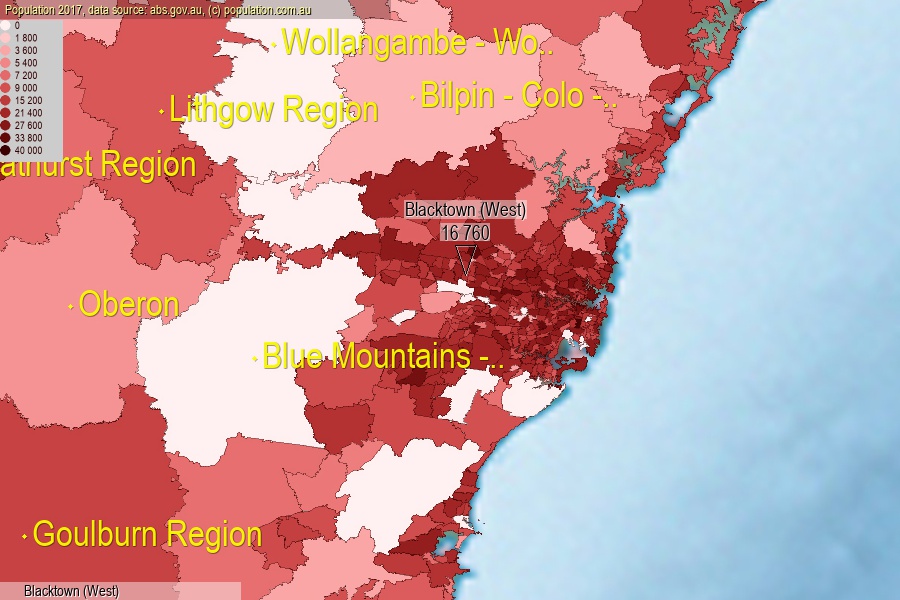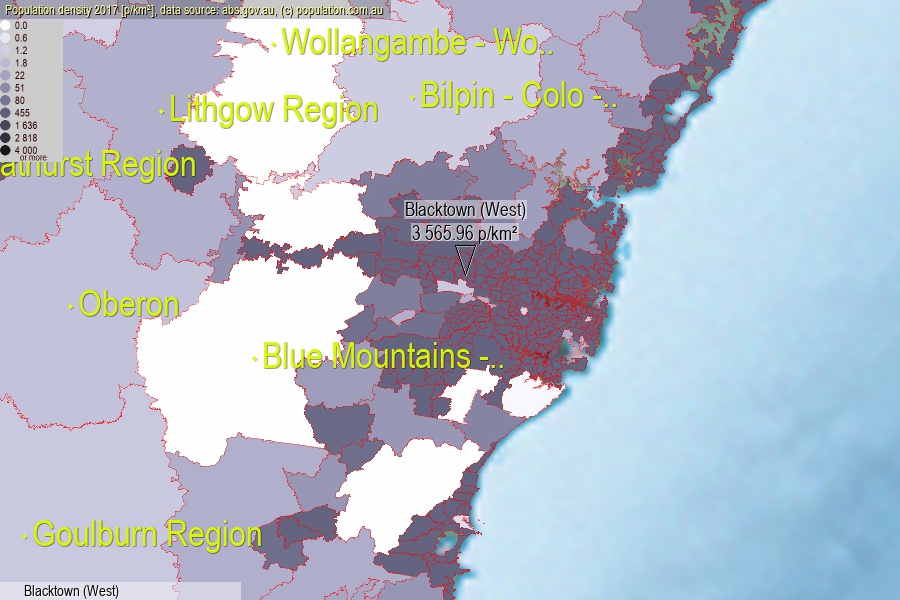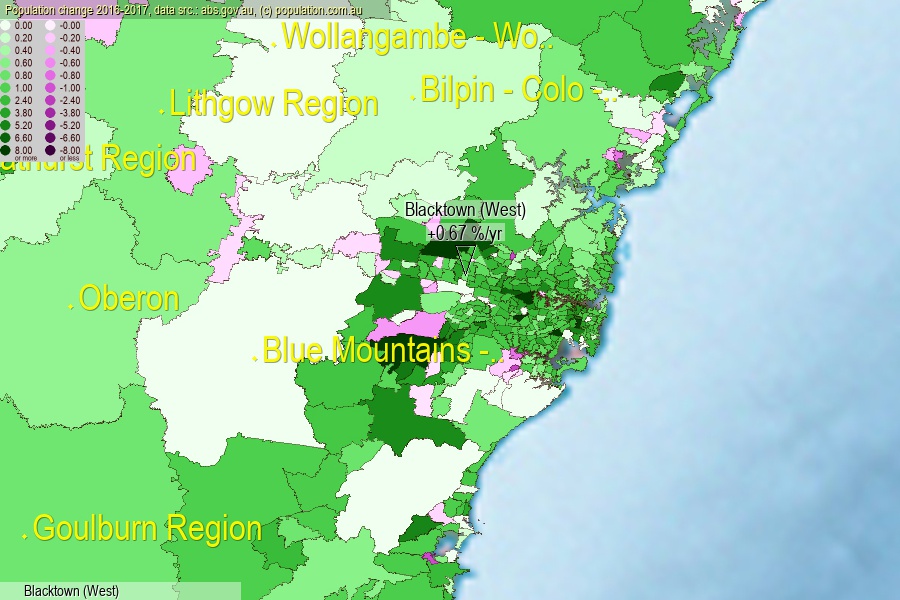 population.com.au
population.com.auLast official estimated population of Blacktown (West) (as Statistical Area Level 2) was 16 760 people (on 2017-06-30)[2]. This was 0.07% of total Australian population and 0.211% of NSW population. Area of Blacktown (West) is 4.70 km², in this year population density was 3 565.96 p/km² . If population growth rate would be same as in period 2016-2017 (+0.67%/yr), Blacktown (West) population in 2025 would be 17 684. [0]



Click to enlarge. Blacktown (West) is located in the center of the images.
Population [people], population density [p./km²] and population change [%/year] [2]
View borders » (new window) [4]
[2001-2002] +0.85 %/Yr.
[2002-2003] +0.03 %/Yr.
[2003-2004] -0.14 %/Yr.
[2004-2005] +0.48 %/Yr.
[2005-2006] +1.01 %/Yr.
[2006-2007] +1.12 %/Yr.
[2007-2008] +2.61 %/Yr.
[2008-2009] +2.58 %/Yr.
[2009-2010] +1.70 %/Yr.
[2010-2011] +1.59 %/Yr.
[2011-2012] +1.04 %/Yr.
[2012-2013] +1.32 %/Yr.
[2013-2014] +1.04 %/Yr.
[2014-2015] +1.25 %/Yr.
[2015-2016] +1.59 %/Yr.
[2016-2017] +0.67 %/Yr.
[0] Calculated with linear interpolation from officially estimated population
[1] Read more about SA2 and Australian Statistical Geography Standard (ASGS) on abs.gov.au
[2] Population data from Australian Bureau of Statistics (Population and density: 2017; change: 2016-2017)
[3] Digital Boundaries: Australian Statistical Geography Standard (ASGS) 2016.
[4] Border coordinates are simplifyed using Ramer-Douglas-Peucker algorithm.